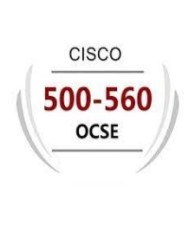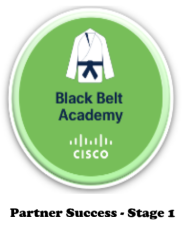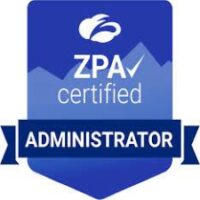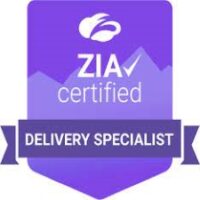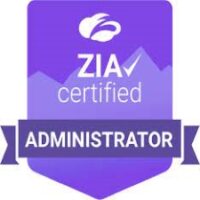The Department of Defense’s (DoD) Cybersecurity Maturity Model Certification (CMMC) program has reshaped how the Defense Industrial Base (DIB), consisting of government contractors, service providers, researchers and development organizations validate their cybersecurity profile to secure Controlled Unclassified Information (CUI) against data spillage and cyber threat actors. With these multi-faceted requirements e.g. DFARS, CFRs, NIST, etc., many organizations find themselves in a paralysis by analysis doom loop, grappling with where to begin and how to align their security practices to achieve compliance efficiently.The key to unlocking this challenge is straightforward: activate the businesses Zero Trust strategy to implement a Zero Trust Architecture (ZTA), which seamlessly aligns with CMMC’s codified approach. Zero Trust doesn’t just simplify compliance; it builds a stronger, more resilient and malleable cybersecurity framework that can be leveraged over and over again to safeguard the other sensitive data outside of CMMC’s core focus.A Paradigm Shift: Moving from Network Perimeter-Based defense to Data-centric Cybersecurity Offense Traditional perimeter-based security relies on the assumption that once a user or entity is inside the network, it can be trusted. This model has become increasingly ineffective against modern cyber threats like lateral attacks, phishing, and insider threats. Enter Zero Trust, a strategy that flips this paradigm on its head by adhering to the mantra: “Never trust, always verify.”Zero Trust focuses on continuous validation of every user, device, and access request without assuming trust simply because of prior authentication or network proximity. Instead of building higher walls i.e., additional complexity and inefficiencies, Zero Trust emphasizes constructing smarter, more context-aware security gates.Here’s the good news: aligning your organization to the principles of Zero Trust naturally fulfills many of CMMC’s NIST requirements—often at a more quantitative and qualitative value, making Zero Trust not only a cybersecurity framework but also a compliance roadmap for meeting evolving regulatory needs.Linking Zero Trust Principles to CMMC Framework RequirementsFor organizations seeking CMMC certification, incorporating Zero Trust offers a practical and forward-thinking way to meet security controls across all five levels of the CMMC framework. Here’s how implementing Zero Trust directly aligns with the core functions of CMMC and CISA’s Zero Trust Maturity Model:1. Define What You Are ProtectingJust as what gets measured, gets managed, what gets defined, gets protected. Zero Trust begins with identifying assets, users, and data to be secured, which maps directly to CMMC’s requirements for performing an asset inventory, scoping security policies, and defining Controlled Unclassified Information (CUI) and its locations.CMMC Impact: By classifying assets and understanding their workflows, you create a baseline for protecting sensitive data and identifying vulnerabilities.Actionable Example: Use Zero Trust technologies to discover and catalog your users, devices, data and applications. 2. Map Transaction FlowsNow that data and resources have been identified, security and compliance architects can understand the businesses communication channels. Zero Trust Architectures require understanding how users, devices, and resources interact within the environment, so that the organization can effectively apply Zero Trust principles and tenets. CMMC Impact: Beyond documenting network and system controls to monitor sensitive data access paths, mapping out these transactional flows allow OSAs to more easily codify and “control the flow” of CUI data. Actionable Example: Leveraging a Zero Trust Policy Enforcement Point (PEP), OSAs can create, encrypt, and monitor data communication flows defined workflows for CUI management.3. Build a Zero Trust ArchitectureAt a high level, Zero Trust’s tenet aligns to specific categories: securing user and data access, protecting data from threats, and reducing risk. As such, implementing Zero Trust significantly aids in meeting CMMC’s requirements for encrypting data-in-transit and at-rest, segmenting the network, and monitoring users, data, and the network, continuously.CMMC Impact: Meeting encryption and network segmentation requirements becomes streamlined with rigorous trust validation and real-time security orchestration.Actionable Example: Adopt Secure Access Service Edge (SASE) and software-defined perimeter (SDP) technology as the core part of a Zero Trust Architecture to increase visibility and enforce strict data controls while improving performance and management.4. Create and Enforce Zero Trust PoliciesZero Trust promotes defining clear and enforceable policies that support identity, access, device hygiene, and change management—aligning directly with several CMMC controls.CMMC Impact: CMMC’s Identity and access management (IAM), asset inventory, and vulnerability management process requirements are also critical for Zero Trust, ensuring synergy between frameworks.Actionable Example: Incorporate policy-based least-privilege access solutions and require multifactor authentication (MFA) to reduce attack points.5. Monitor and Maintain the EnvironmentBoth Zero Trust and CMMC emphasize ongoing monitoring and threat mitigation. Security and compliance are not “set it and forget it” activities; they are an evolving system of systems that require constant refinement based on situational awareness.CMMC Impact: Real-time monitoring and auditing required by CMMC are simplified with Zero Trust’s focus on continuous diagnostics, monitoring, and logging every transaction.Actionable Example: Deploy a Security Service Edge (SSE) integrates with the organization’s ecosystem to directly glean insights and present information via dashboards and reports. A Tautologic Exercise: Zero Trust & CMMC’s ScopePrioritizing Zero Trust migrations creates a path to CMMC compliance. CMMC and Zero Trust’s data-centric approach makes them synonymous with prioritizing protecting users and data by placing security controls as close to the user and data to achieve Just in Time / Just Enough Access (JIT/JEA) i.e. enforcing principles of least privileged access. Meeting the standards of one organically allows organizations to meet the standards of the other. 1. Identity (Who is Accessing the Data?)Both CMMC and Zero Trust champion robust identity verification measures. Implementing identity solutions like Multifactor Authentication (MFA), Single Sign-On (SSO), and Identity and Access Management (IAM) safeguards ensures that only the right users have access to CUI. While Identity is critical to CMMC and Zero Trust, how the organization leverages and manages the user’s identity attributes to dynamically provide access to data and resources is most important. 2. Device (What Devices are Accessing the Network and Data?)Just as Zero Trust aims to identify entities, person and non-person, CMMC mandates the same amount of visibility on every endpoint in your environment, from laptops to mobile devices to processes, enabling an endpoint detection and response (EDR) component to support business goals. 3. Network (How is Data Transmitted?)Secure Access Service Edge (SASE) combines robust and encrypted network segmentation capabilities with the ability to aggregate ABAC and PBAC policies, providing context-based access control to CUI so that organizations can meet CMMC’s technical control and assessment requirements.4. Applications and Workloads (Where is Data Accessed?)In this mobile-first world, cloud-native Zero Trust solutions naturally support secure application delivery and workload segmentation, helping organizations migrate to secure, scalable environments while reducing attack surfaces.5. Data (What is the Target?)Zero Trust enforces data encryption, tagging, and classification — processes that are foundational to effectively manage CUI within a CMMC program. With data-centric administrative and security policies, organizations can tightly control access and track usage without compromising efficiency to business operations or research institutions. 4. Analytics & Visibility (Who is Accessing the Data?)Because Zero Trust Architectures maintains comprehensive insights into all traffic, users, devices, applications, and workloads across the network, organizations leveraging Zero Trust can monitor patterns, behaviors, and trends to identify potential threats or suspicious activity within CMMC environments and enclaves.5. Automation & Orchestration (Streamline Policy Enforcement and Responsiveness)As organizations begin to align CMMC to Zero Trust they will be able to benefit from performing repetitive tasks, without human intervention, ensuring consistency and accuracy to coordinate multiple automated tasks across different systems to achieve broader goals, creating harmony in complex environments, especially within the manufacturing industry.Why Prioritize Zero Trust for CMMC Compliance?By focusing on Zero Trust, organizations tackling CMMC achieve two critical outcomes:Streamlined Compliance: Many Zero Trust controls, such as automated access policies, encryption, and continuous monitoring, overlap directly with CMMC requirements. This strategic duality ensures security and compliance achieve parity in a scalable, manageable way.Adaptive Security Posture: Zero Trust supports a proactive approach to cybersecurity, enabling organizations to defend against emerging threats and maintain readiness for future regulatory requirements.Real-World Benefits from Zscaler’s Zero Trust SolutionsOrganizations Seeking Assessments find progress and measurable success with Zscaler’s Zero Trust offerings to achieve CMMC compliance. From secure access and granular policy controls to modernizing network security, Zscaler’s platform simplifies compliance while fortifying defense against cyber threats, even at “alternate work locations.” Through their recent webinar, Zscaler’s Sean Connelly and Jeffrey Adorno walked participants through the tangible benefits of combining Zero Trust principles with CMMC compliance initiatives. Whether you’re newly establishing your CMMC enclave or modernizing your current CMMC-cybersecurity strategy, using Zscaler to implement CMMC as part of a Zero Trust Architecture provides a clear pathway to success.Final Thoughts: Aligning Zero Trust and CMMC for Long-Term ValueAs cybersecurity threats evolve, compliance frameworks like CMMC will evolve as well. By leveraging Zscaler as the foundational Zero Trust solution, organizations can future-proof their cybersecurity profile, seamlessly expedite compliance processes while building stronger defenses to protect CUI, offering organizations a smarter, more sustainable way to keep pace with regulatory and security demands.
[#item_full_content] The Department of Defense’s (DoD) Cybersecurity Maturity Model Certification (CMMC) program has reshaped how the Defense Industrial Base (DIB), consisting of government contractors, service providers, researchers and development organizations validate their cybersecurity profile to secure Controlled Unclassified Information (CUI) against data spillage and cyber threat actors. With these multi-faceted requirements e.g. DFARS, CFRs, NIST, etc., many organizations find themselves in a paralysis by analysis doom loop, grappling with where to begin and how to align their security practices to achieve compliance efficiently.The key to unlocking this challenge is straightforward: activate the businesses Zero Trust strategy to implement a Zero Trust Architecture (ZTA), which seamlessly aligns with CMMC’s codified approach. Zero Trust doesn’t just simplify compliance; it builds a stronger, more resilient and malleable cybersecurity framework that can be leveraged over and over again to safeguard the other sensitive data outside of CMMC’s core focus.A Paradigm Shift: Moving from Network Perimeter-Based defense to Data-centric Cybersecurity Offense Traditional perimeter-based security relies on the assumption that once a user or entity is inside the network, it can be trusted. This model has become increasingly ineffective against modern cyber threats like lateral attacks, phishing, and insider threats. Enter Zero Trust, a strategy that flips this paradigm on its head by adhering to the mantra: “Never trust, always verify.”Zero Trust focuses on continuous validation of every user, device, and access request without assuming trust simply because of prior authentication or network proximity. Instead of building higher walls i.e., additional complexity and inefficiencies, Zero Trust emphasizes constructing smarter, more context-aware security gates.Here’s the good news: aligning your organization to the principles of Zero Trust naturally fulfills many of CMMC’s NIST requirements—often at a more quantitative and qualitative value, making Zero Trust not only a cybersecurity framework but also a compliance roadmap for meeting evolving regulatory needs.Linking Zero Trust Principles to CMMC Framework RequirementsFor organizations seeking CMMC certification, incorporating Zero Trust offers a practical and forward-thinking way to meet security controls across all five levels of the CMMC framework. Here’s how implementing Zero Trust directly aligns with the core functions of CMMC and CISA’s Zero Trust Maturity Model:1. Define What You Are ProtectingJust as what gets measured, gets managed, what gets defined, gets protected. Zero Trust begins with identifying assets, users, and data to be secured, which maps directly to CMMC’s requirements for performing an asset inventory, scoping security policies, and defining Controlled Unclassified Information (CUI) and its locations.CMMC Impact: By classifying assets and understanding their workflows, you create a baseline for protecting sensitive data and identifying vulnerabilities.Actionable Example: Use Zero Trust technologies to discover and catalog your users, devices, data and applications. 2. Map Transaction FlowsNow that data and resources have been identified, security and compliance architects can understand the businesses communication channels. Zero Trust Architectures require understanding how users, devices, and resources interact within the environment, so that the organization can effectively apply Zero Trust principles and tenets. CMMC Impact: Beyond documenting network and system controls to monitor sensitive data access paths, mapping out these transactional flows allow OSAs to more easily codify and “control the flow” of CUI data. Actionable Example: Leveraging a Zero Trust Policy Enforcement Point (PEP), OSAs can create, encrypt, and monitor data communication flows defined workflows for CUI management.3. Build a Zero Trust ArchitectureAt a high level, Zero Trust’s tenet aligns to specific categories: securing user and data access, protecting data from threats, and reducing risk. As such, implementing Zero Trust significantly aids in meeting CMMC’s requirements for encrypting data-in-transit and at-rest, segmenting the network, and monitoring users, data, and the network, continuously.CMMC Impact: Meeting encryption and network segmentation requirements becomes streamlined with rigorous trust validation and real-time security orchestration.Actionable Example: Adopt Secure Access Service Edge (SASE) and software-defined perimeter (SDP) technology as the core part of a Zero Trust Architecture to increase visibility and enforce strict data controls while improving performance and management.4. Create and Enforce Zero Trust PoliciesZero Trust promotes defining clear and enforceable policies that support identity, access, device hygiene, and change management—aligning directly with several CMMC controls.CMMC Impact: CMMC’s Identity and access management (IAM), asset inventory, and vulnerability management process requirements are also critical for Zero Trust, ensuring synergy between frameworks.Actionable Example: Incorporate policy-based least-privilege access solutions and require multifactor authentication (MFA) to reduce attack points.5. Monitor and Maintain the EnvironmentBoth Zero Trust and CMMC emphasize ongoing monitoring and threat mitigation. Security and compliance are not “set it and forget it” activities; they are an evolving system of systems that require constant refinement based on situational awareness.CMMC Impact: Real-time monitoring and auditing required by CMMC are simplified with Zero Trust’s focus on continuous diagnostics, monitoring, and logging every transaction.Actionable Example: Deploy a Security Service Edge (SSE) integrates with the organization’s ecosystem to directly glean insights and present information via dashboards and reports. A Tautologic Exercise: Zero Trust & CMMC’s ScopePrioritizing Zero Trust migrations creates a path to CMMC compliance. CMMC and Zero Trust’s data-centric approach makes them synonymous with prioritizing protecting users and data by placing security controls as close to the user and data to achieve Just in Time / Just Enough Access (JIT/JEA) i.e. enforcing principles of least privileged access. Meeting the standards of one organically allows organizations to meet the standards of the other. 1. Identity (Who is Accessing the Data?)Both CMMC and Zero Trust champion robust identity verification measures. Implementing identity solutions like Multifactor Authentication (MFA), Single Sign-On (SSO), and Identity and Access Management (IAM) safeguards ensures that only the right users have access to CUI. While Identity is critical to CMMC and Zero Trust, how the organization leverages and manages the user’s identity attributes to dynamically provide access to data and resources is most important. 2. Device (What Devices are Accessing the Network and Data?)Just as Zero Trust aims to identify entities, person and non-person, CMMC mandates the same amount of visibility on every endpoint in your environment, from laptops to mobile devices to processes, enabling an endpoint detection and response (EDR) component to support business goals. 3. Network (How is Data Transmitted?)Secure Access Service Edge (SASE) combines robust and encrypted network segmentation capabilities with the ability to aggregate ABAC and PBAC policies, providing context-based access control to CUI so that organizations can meet CMMC’s technical control and assessment requirements.4. Applications and Workloads (Where is Data Accessed?)In this mobile-first world, cloud-native Zero Trust solutions naturally support secure application delivery and workload segmentation, helping organizations migrate to secure, scalable environments while reducing attack surfaces.5. Data (What is the Target?)Zero Trust enforces data encryption, tagging, and classification — processes that are foundational to effectively manage CUI within a CMMC program. With data-centric administrative and security policies, organizations can tightly control access and track usage without compromising efficiency to business operations or research institutions. 4. Analytics & Visibility (Who is Accessing the Data?)Because Zero Trust Architectures maintains comprehensive insights into all traffic, users, devices, applications, and workloads across the network, organizations leveraging Zero Trust can monitor patterns, behaviors, and trends to identify potential threats or suspicious activity within CMMC environments and enclaves.5. Automation & Orchestration (Streamline Policy Enforcement and Responsiveness)As organizations begin to align CMMC to Zero Trust they will be able to benefit from performing repetitive tasks, without human intervention, ensuring consistency and accuracy to coordinate multiple automated tasks across different systems to achieve broader goals, creating harmony in complex environments, especially within the manufacturing industry.Why Prioritize Zero Trust for CMMC Compliance?By focusing on Zero Trust, organizations tackling CMMC achieve two critical outcomes:Streamlined Compliance: Many Zero Trust controls, such as automated access policies, encryption, and continuous monitoring, overlap directly with CMMC requirements. This strategic duality ensures security and compliance achieve parity in a scalable, manageable way.Adaptive Security Posture: Zero Trust supports a proactive approach to cybersecurity, enabling organizations to defend against emerging threats and maintain readiness for future regulatory requirements.Real-World Benefits from Zscaler’s Zero Trust SolutionsOrganizations Seeking Assessments find progress and measurable success with Zscaler’s Zero Trust offerings to achieve CMMC compliance. From secure access and granular policy controls to modernizing network security, Zscaler’s platform simplifies compliance while fortifying defense against cyber threats, even at “alternate work locations.” Through their recent webinar, Zscaler’s Sean Connelly and Jeffrey Adorno walked participants through the tangible benefits of combining Zero Trust principles with CMMC compliance initiatives. Whether you’re newly establishing your CMMC enclave or modernizing your current CMMC-cybersecurity strategy, using Zscaler to implement CMMC as part of a Zero Trust Architecture provides a clear pathway to success.Final Thoughts: Aligning Zero Trust and CMMC for Long-Term ValueAs cybersecurity threats evolve, compliance frameworks like CMMC will evolve as well. By leveraging Zscaler as the foundational Zero Trust solution, organizations can future-proof their cybersecurity profile, seamlessly expedite compliance processes while building stronger defenses to protect CUI, offering organizations a smarter, more sustainable way to keep pace with regulatory and security demands.

